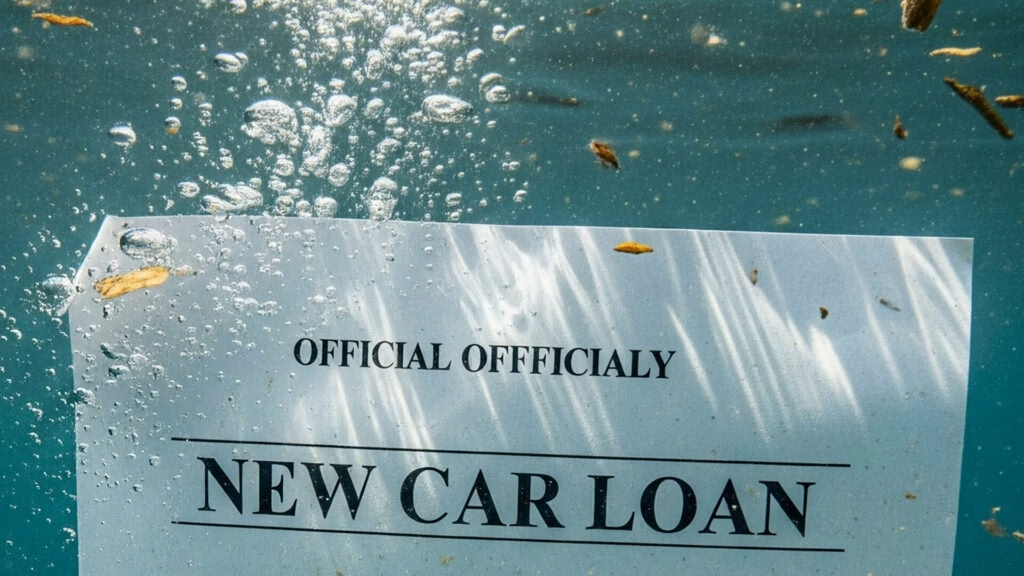Why Are So Many Car Buyers Underwater on Their Loans Right Now?
If you’ve traded in a car lately or are thinking about it, you might have heard the term underwater loan. It’s not about water damage—being underwater means you owe more on your car loan than your car is worth. And right now, it’s a growing problem. According to new data from Edmunds, more than one in four new car buyers (26.6%) are underwater on their trade-ins, the highest rate in four years. That’s up from 23.9% just last year.
So, what’s fueling this rise? Several factors are at play. Car prices surged during the pandemic, and while they’ve cooled a bit, many buyers paid top dollar for vehicles that are now depreciating faster than their loan balances. Combine that with longer loan terms—sometimes stretching six or seven years—and it’s no wonder negative equity is becoming the norm.
How Much Negative Equity Are Buyers Carrying Into New Loans?
Let’s talk numbers, because the scale is eye-opening. The average underwater trade-in owner owes $6,754 more than their car is worth. That’s nearly $500 higher than last year. But for some, the gap is much wider: 32.6% of underwater trade-ins had between $5,000 and $10,000 in negative equity, 23.4% owed more than $10,000, and a surprising 7.7% were upside-down by over $15,000.
What happens when buyers roll this debt into a new car loan? Their monthly payments skyrocket. The average payment for those carrying negative equity into a new loan hit $915—$159 more than the industry average. And these buyers typically finance $12,145 more than those without negative equity. Ouch.
Is This a New Problem or a Return to Old Habits?
It’s tempting to think this is a brand-new issue, but the data tells a more nuanced story. In 2020, negative equity rates spiked to 37.2% as used car values tumbled. Then, during the pandemic’s used car shortage, trade-in values shot up and negative equity dropped. Now, as the market normalizes, the old pattern is creeping back.
The average age of trade-ins has also ticked up, from 3.2 years in 2022 to 3.8 years in 2025. That suggests people are holding onto cars a bit longer, but not long enough to escape the depreciation trap. The result? More folks find themselves underwater when it’s time to trade up.
What Are the Risks of Rolling Negative Equity Into a New Loan?
Rolling negative equity into a new loan might seem like a quick fix, but it’s a slippery slope. You’re essentially paying off your old car and your new one at the same time. That means higher monthly payments, more interest paid over the life of the loan, and a greater risk of falling behind if your financial situation changes.
According to the Federal Reserve, auto loan delinquencies are on the rise, with 5.1% of Americans behind on their car payments as of mid-2025. That’s a warning sign. If you’re already stretched thin, adding more debt can push you closer to default or even repossession.
How Can Buyers Avoid Getting Trapped With Negative Equity?
First, knowledge is power. Before you even think about trading in your car, check your loan payoff amount and compare it to your vehicle’s current value. Sites like Edmunds and Kelley Blue Book can give you a solid estimate. If you’re underwater, consider holding onto your car a bit longer. Keeping up with payments and routine maintenance can help you build equity over time.
If you absolutely need a new vehicle, be realistic about your budget and needs. Don’t let a dealer talk you into a more expensive car just because they can roll your old debt into the new loan. And if you’re tempted by those long loan terms to lower your monthly payment, remember: the longer the loan, the more likely you are to end up underwater again.
Are There Smarter Ways to Trade In or Buy a Car?
Absolutely. Here are a few tips from financial experts and auto industry insiders:
– Make a larger down payment if possible. This reduces the amount you need to finance and helps offset any negative equity.
– Shop around for the best trade-in offer. Some dealers will pay more than others, especially for in-demand models.
– Consider selling your car privately. You might get a better price than trading it in.
– Avoid rolling old debt into a new loan unless it’s absolutely necessary. If you must, choose a less expensive car to keep your payments manageable.
– Pay attention to interest rates. Even a small difference can add up over a five- or six-year loan.
What’s the Bottom Line for Car Buyers in 2025?
The auto loan landscape is shifting, and negative equity is a growing concern. But it’s not all doom and gloom. With a little homework and some smart decision-making, you can avoid the pitfalls that trap so many buyers.
The big takeaway? Getting out from underwater isn’t about perfection—it’s about smarter adjustments. Start with one change this week, and you’ll likely spot the difference by month’s end.

